As kimchi’s vary from region to region, and even family to family, there’s no distinct blanket way to describe a kimchi recipe. You can easily google kimchi and find a myriad of recipes using similar things but I think it’s better to think of kimchi as a process instead of a recipe. One that that can be recreated for any type of produce regardless of where you live in the world. One of the best ways to describe kimchi is written by NY Times cooking columnist, Eric Kim, who says to think of kimchi as a verb. Similar to how ‘pickling’ is a method, kimchi-ing is as well.
In Scandinavia, I seldom find Korean restaurants serving up juicy, funky, and spicy kimchi as the small amount of Korean joints in Copenhagen know their audience. Majority of Scandinavian palates veer towards as little spice as possible. So obviously, I take it into my own hands with whatever local Danish produce fits the job.
While it would be more traditionally correct to host a Kimjang- the communal act of making kimchi- often yielding enough to last a household through the winter, I one, don’t have Scandinavian friends who are interested enough in sour, strong flavors, and two, Copenhagen apartments don’t have appropriate space to store that amount of kimchi. So, I settle for making large batches throughout the seasons to experiment with the myriad of Scandinavian vegetables that are perfect for kimchi-ing.
Different ways to kimchi:
Author behind Sook and Chef, Mina Park, makes geannip kimchi (i.e. perilla leaf kimchi)
Tina Choi aka Doobydobap makes kohlrabi kimchi
Eric Kim of the NY Times talks about kimchi-ing tomatoes and fennel
Joanne Molinaro aka The Korean Vegan shares her favorite (vegan) kimchi of all time
How I like to kimchi
The spirit of Kimchi entails using local and seasonal produce- which looks different for everyone depending on where you are. For example, In Denmark, napa cabbage season has yet to swing into the market as early spring vegetables in this Nordic climate range from asparagus, beans, radish, and leeks.
$3 for a mack daddy daikon??? Sold.
Radish kimchi or kkaduki in Korean is normally fermented in cubes with onion, garlic, green onions, ginger, and gochugaru- but I had more ingredients in my fridge I need to use. I love my kimchi super crunchy so I look for veggies that have a super high-water content that absorb salt really well. I.e., radish, kohlrabi, cabbage, cucumber, etc.
Salt. Your. Veggies. This is not negotiable.
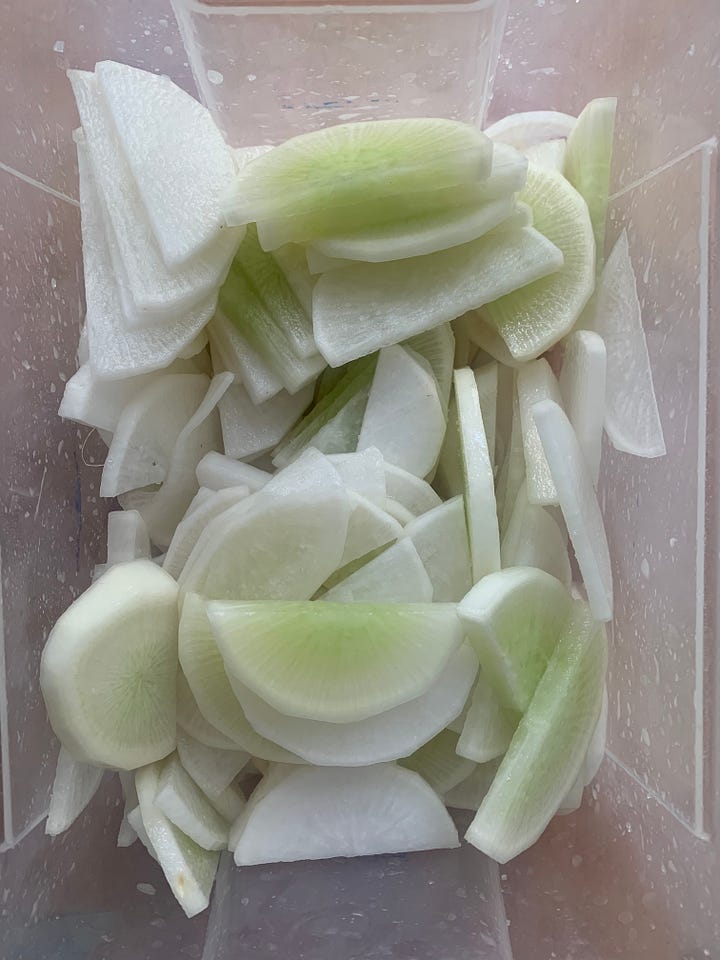
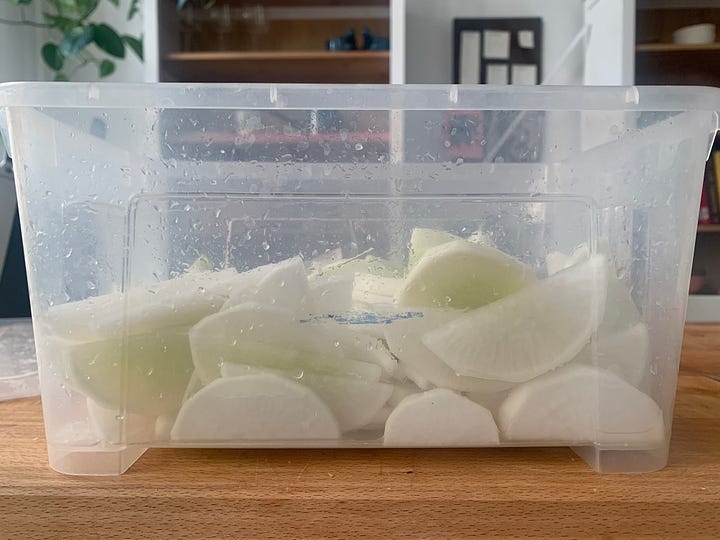
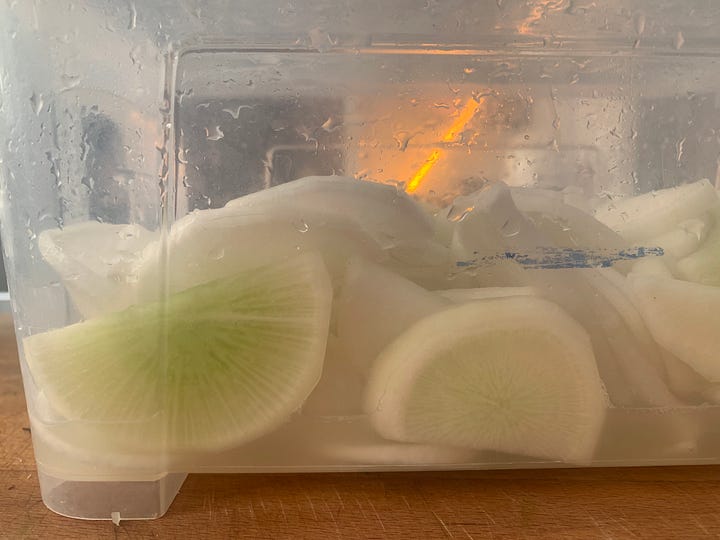
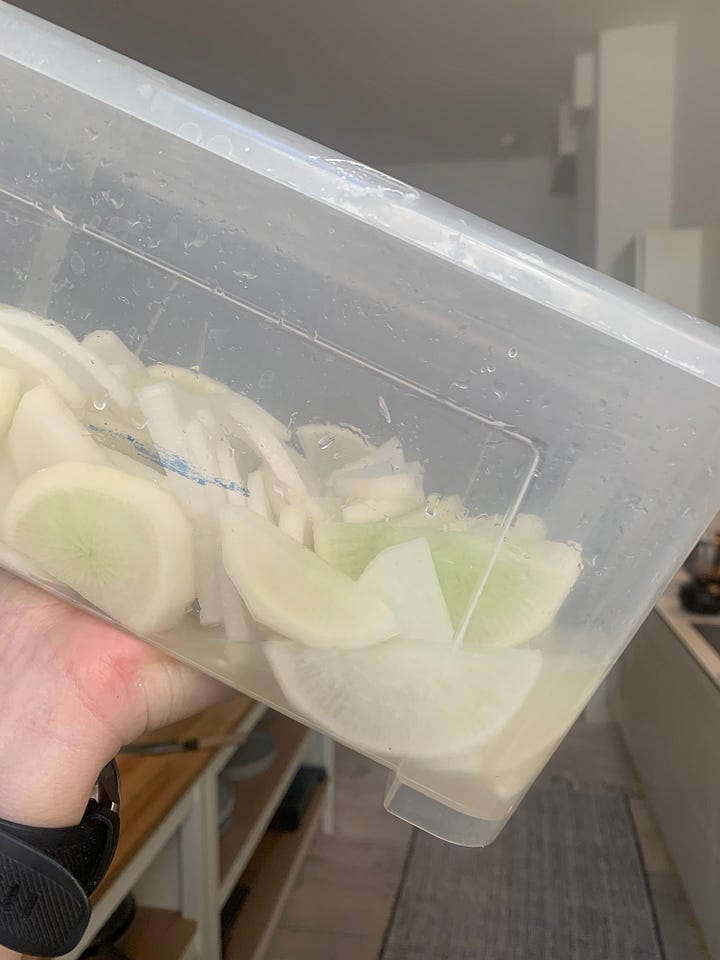
While kkaduki is normally cut into cubes, I like my radish cut into half-moons. Sue me. It’s absolutely imperative that you salt the main vegetable. This is so the water draws out and salt is absorbed into the radish. I believe that the longer you let the salt penetrate the vegetable, the better your kimchi will be.
This should take anywhere from 2-5 hours but sometimes overnight. I know it’s ready when the radish is no longer tough and strong but rather flimsy and bendable without breaking. I use large plastic bins for this process as it contains the mess and has a lid that keeps good stuff in and bad stuff out. Plus, it’s easy to keep an eye on things. These bins are $3 at IKEA and are perfect for preparing large batches of any ferment.
Gather
Again, use what you have!! All these ingredients (minus the daikon) are things I always have on hand and in this scenario, really needed to use. I love using a lot of green onion as it has the perfect crunch when it’s fermented.
Blend the aromatics aka the fermentation kickoff committee
Blitz some ginger, garlic, onion, apple, soy sauce, fish sauce, and plum until it resembles a paste. All of these ingredients are crawling with millions (maybe even billions??) of wild yeast microbes that are just itching for something to eat. Obliterating the cell walls of these ingredients and introducing the sugars (in the fruit) will kickstart the fermentation process when introduced to an oxygen free (anaerobic) environment.
On starch paste + Gochugaru
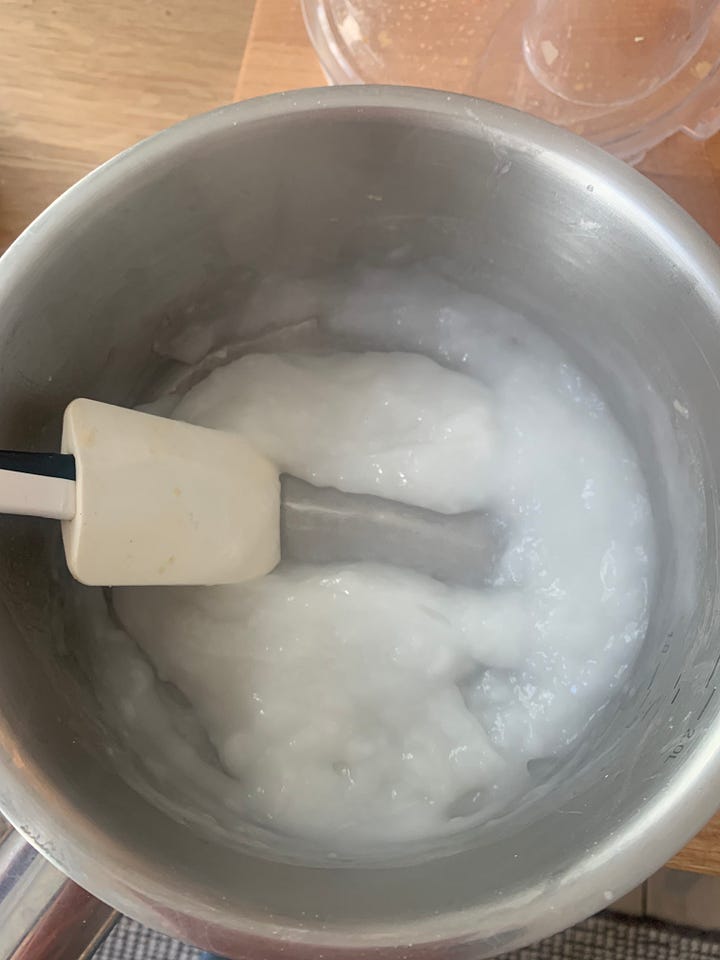
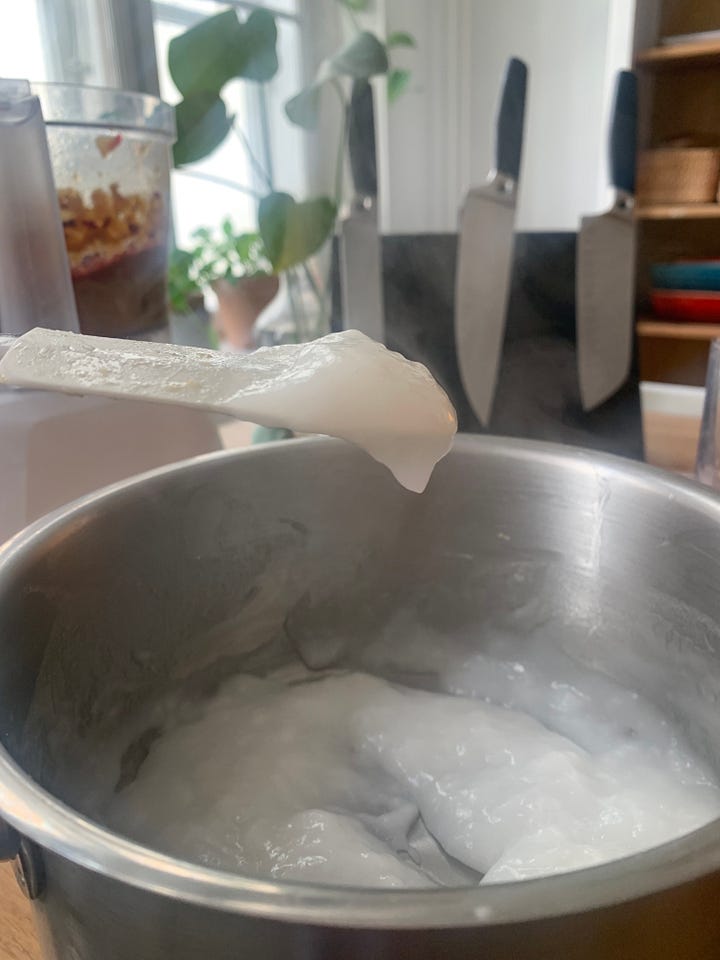
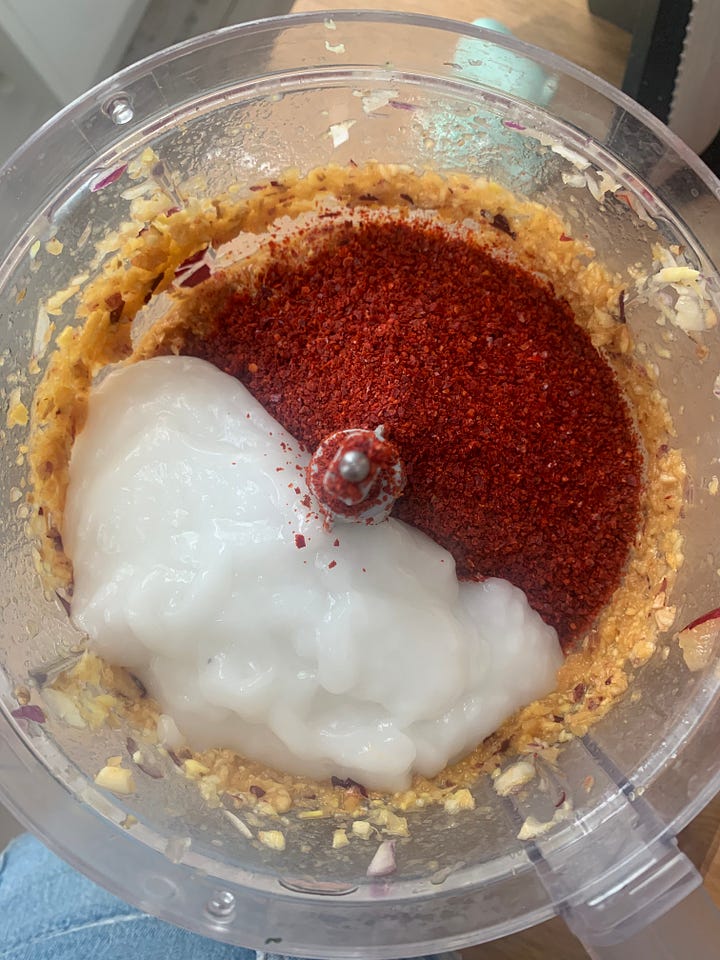
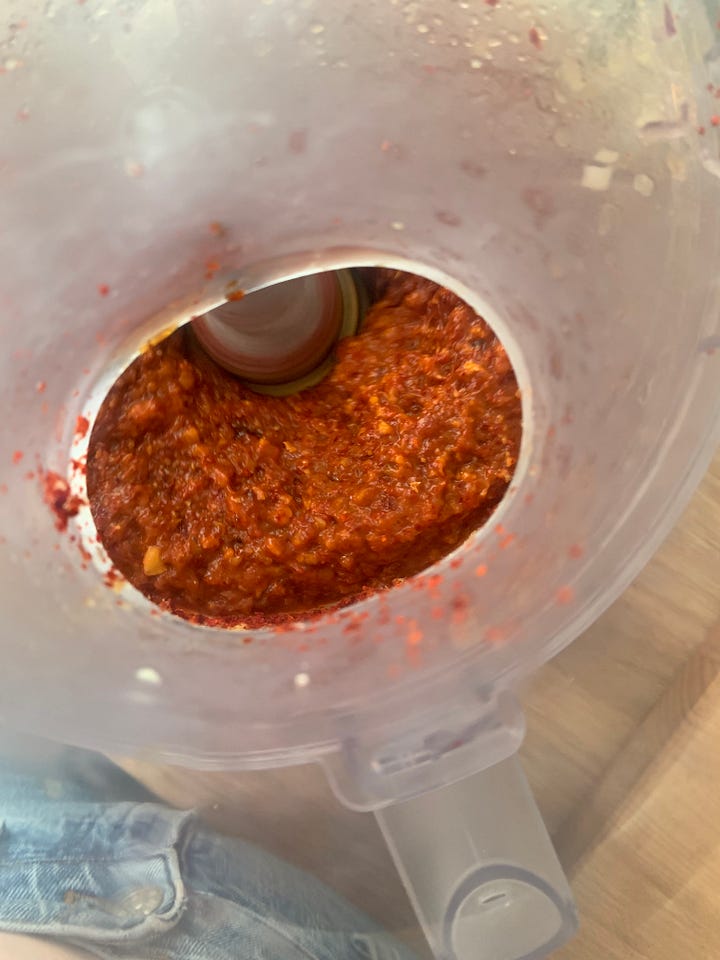
You don’t have to use a starch paste, as it’s unnecessary for many kimchi’s, but it’s necessary for this one. Since we’re using large bits of radish and green onion, the paste acts as a binding vessel for the blitzed garlic mixture and the red pepper flakes. Think of it like the glue that helps keep things together.
To make starch paste: Mix rice flour and water together over high heat until the mixture congeals into a paste. Stir continuously for 30 seconds as the starch will congeal quickly. For this batch I used 1/4 cup of rice flour and about 1/2 cup of water.
Mix everything together
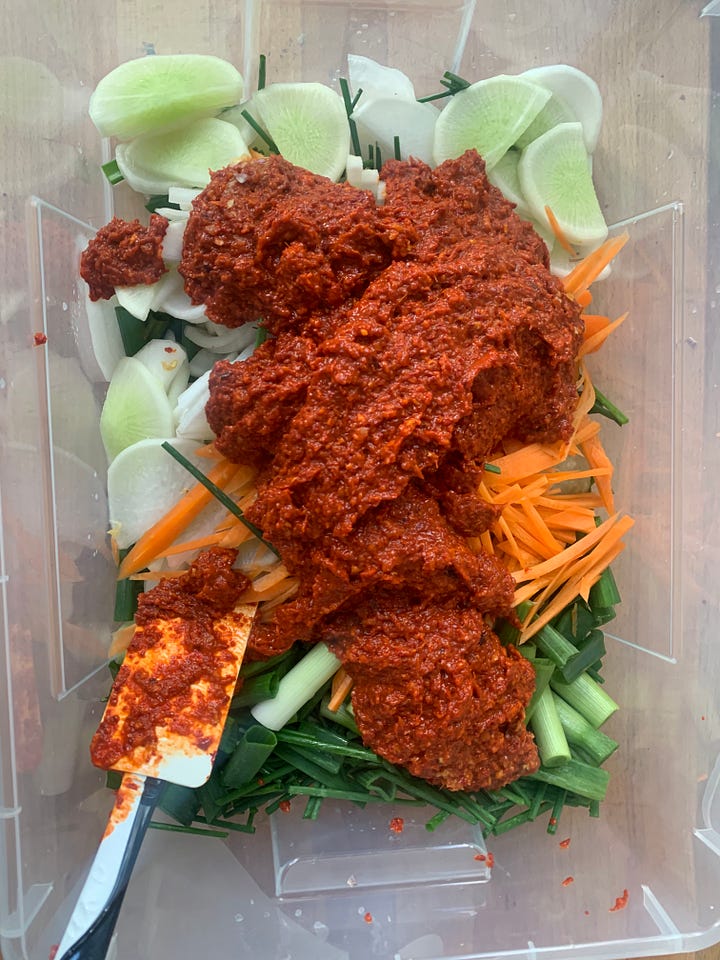

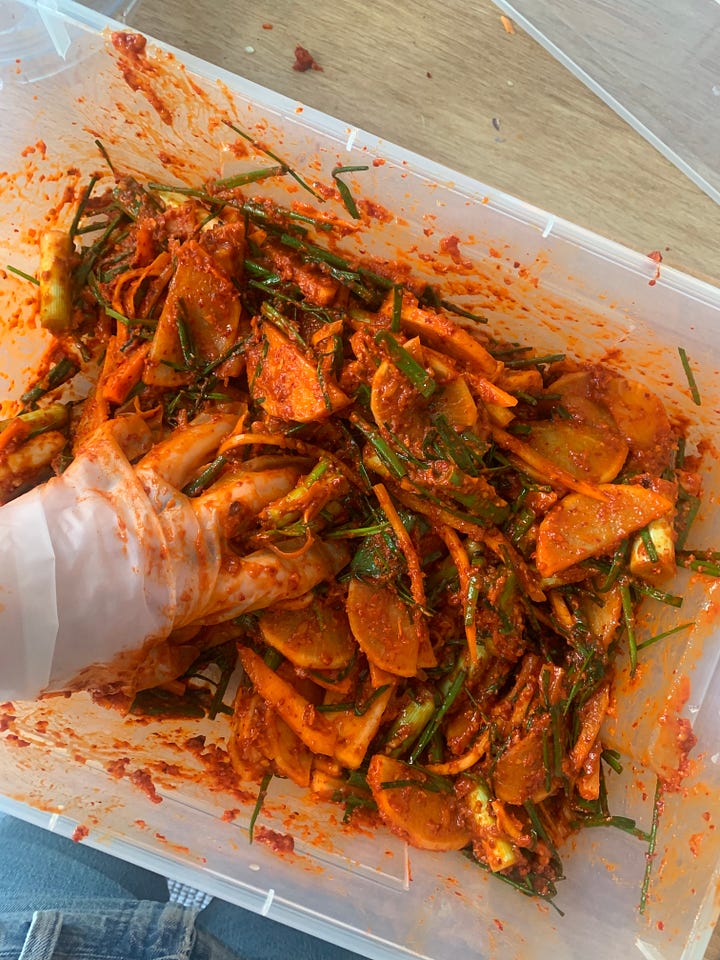

Pack
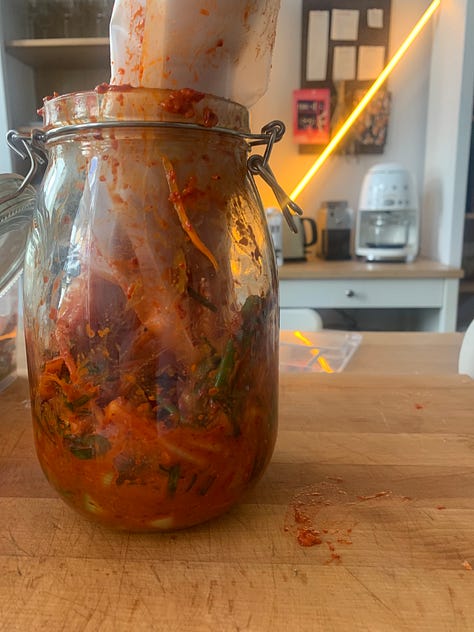
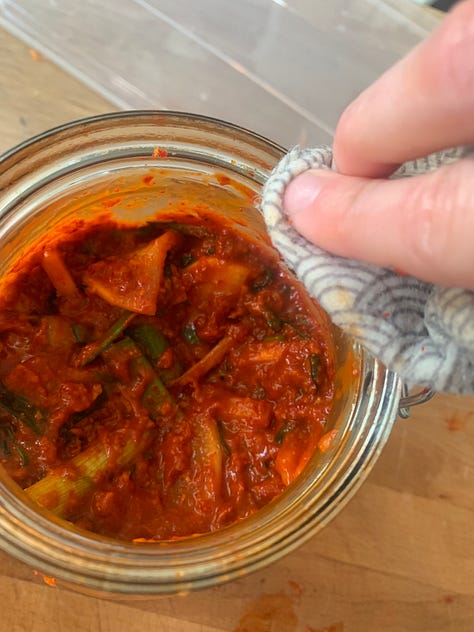
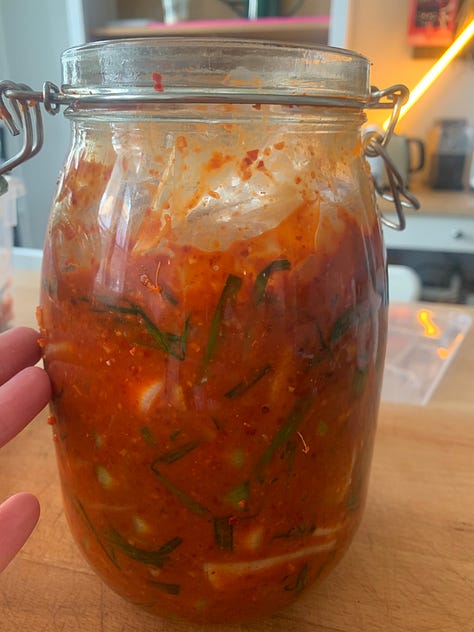
Make sure you leave enough room in the jar for the kimchi to expand as the CO2 build up from the lacto-bacteria will build up a lot of pressure. The first time I ever made kimchi I made the mistake of packing the jar to the very top which only led to one result: an explosion. So please, leave some room so the microbes can breathe.
Wait and taste often
Every day, I ‘burp’ my jars of kimchi to let out the CO2 build up so I don’t experience another explosion. I do this by slowly opening the jar- you know it worked when you hear a small pop similar to the sound of corking a bottle of wine. You’ll notice the most activity in the first couple of days as the microbes are booming with activity in their new environment. After a week or so, ‘burping’ will no longer be necessary.
After 5 days or so in room temperature, move the kimchi to the fridge to slow down fermentation and enjoy till your next batch.
List of ingredients
Daikon Radish
Green onion
Chives
Carrot
Onion
Garlic
Ginger
Apple
Plum
Rice flour
Gochugaru
Soy sauce
Fish sauce
~fin~




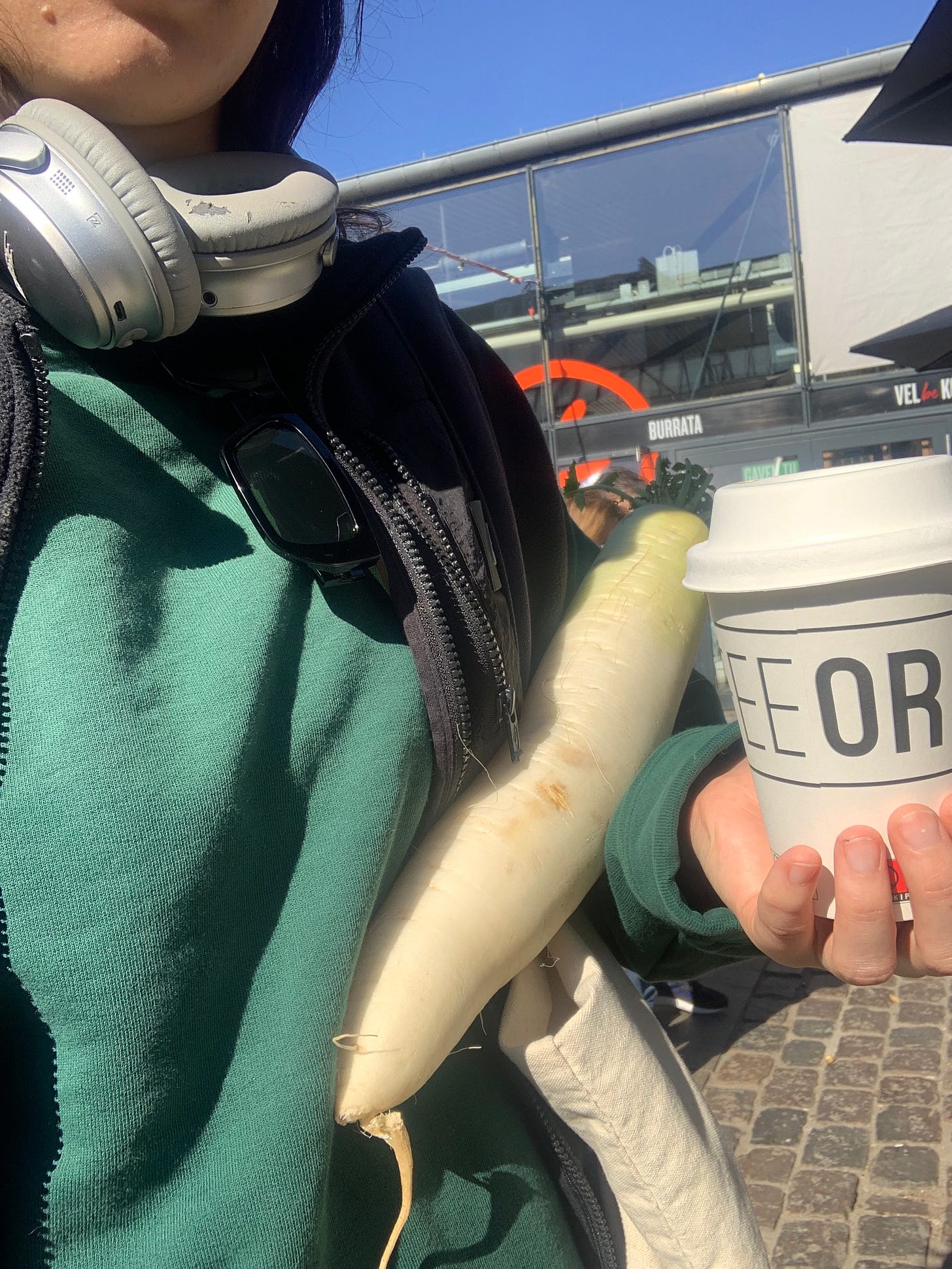
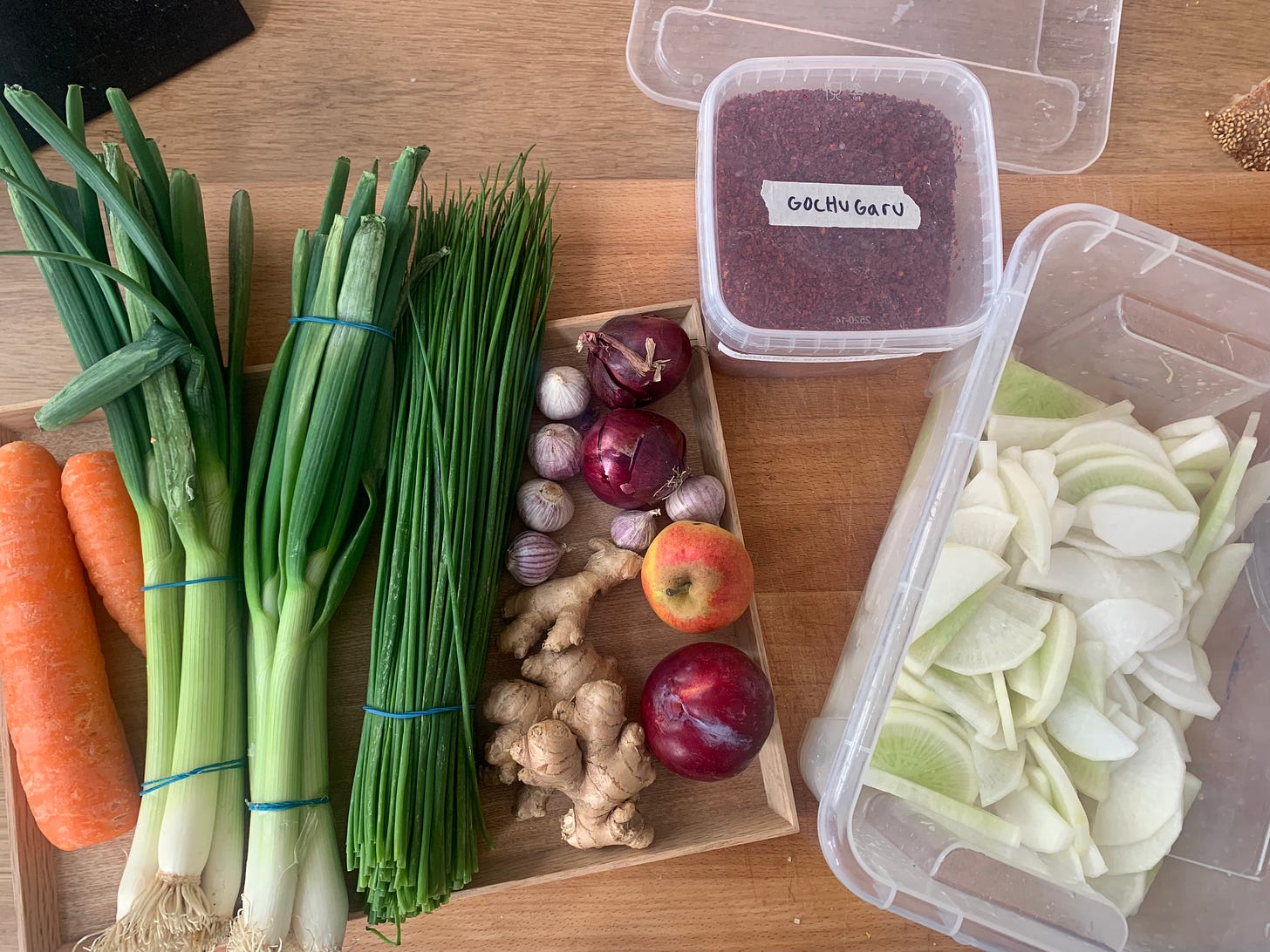
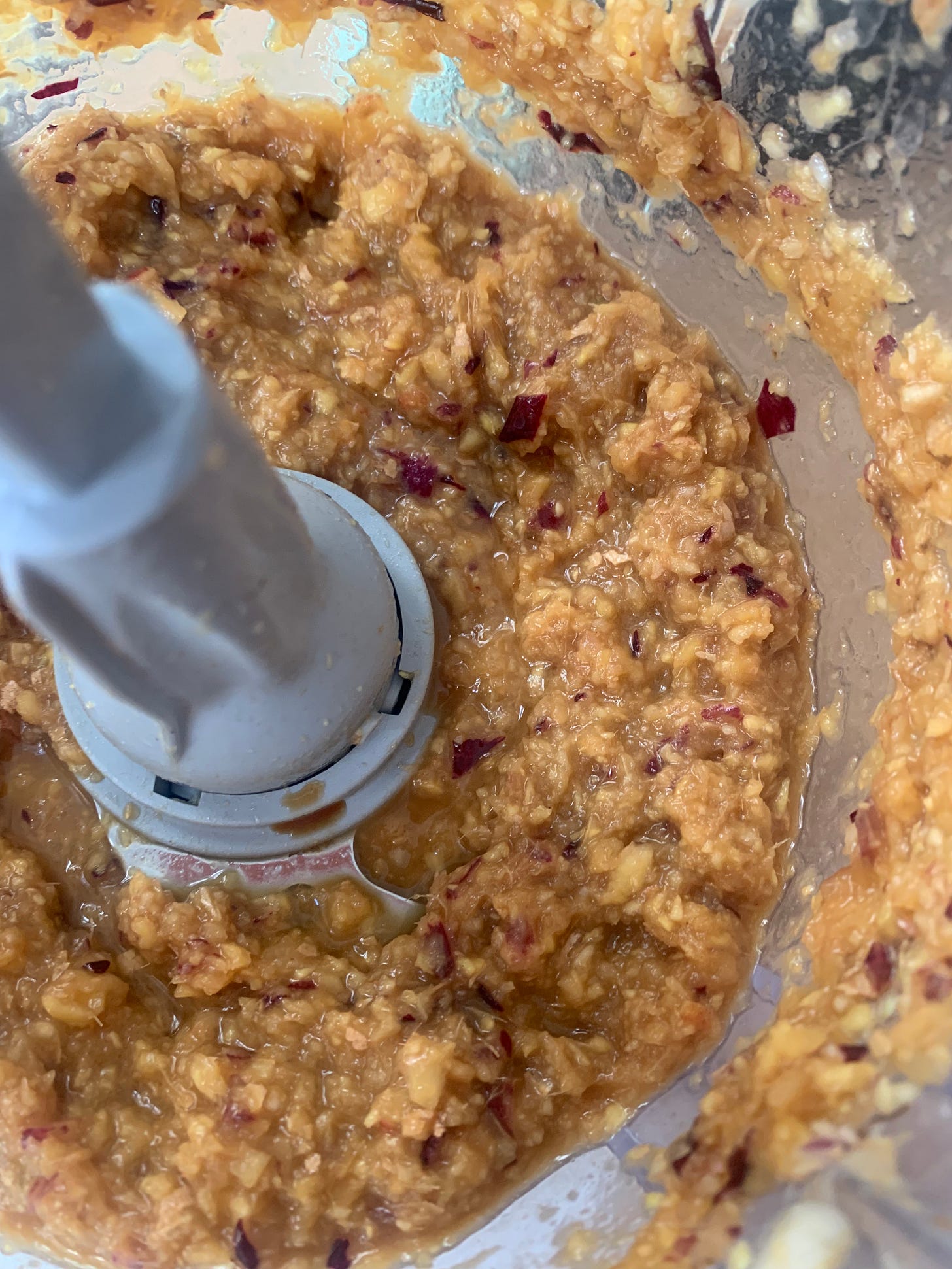
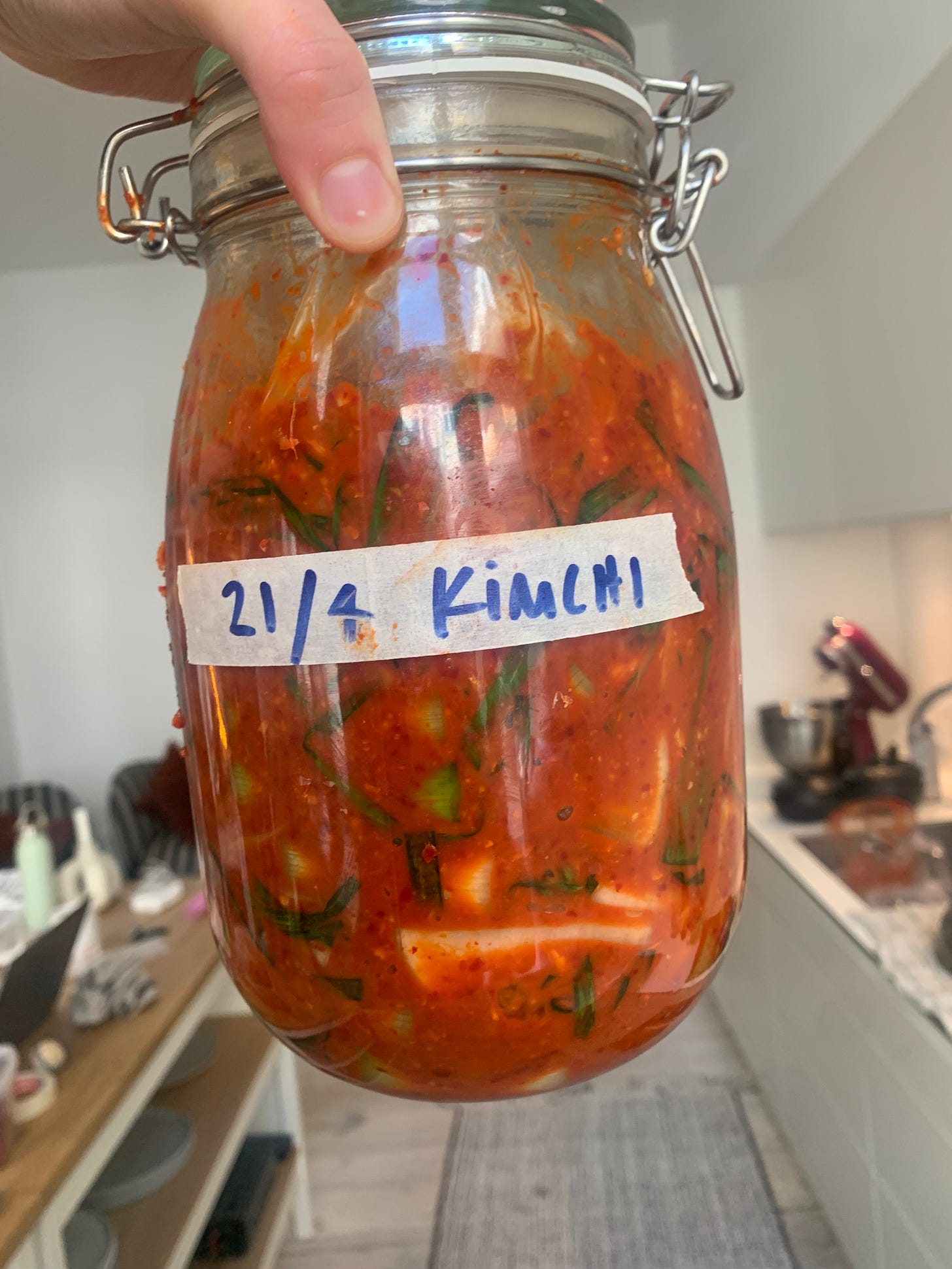
Awesome process post! I enjoyed the picture of you cradling the radish in your arm like a baby.
For some reason, I had no idea you were based in Denmark, that's awesome! I was there for a microbial foods conference last year and Copenhagen (and DTU) is certainly a hub for these things.
Thanks for sharing, Kelsey!